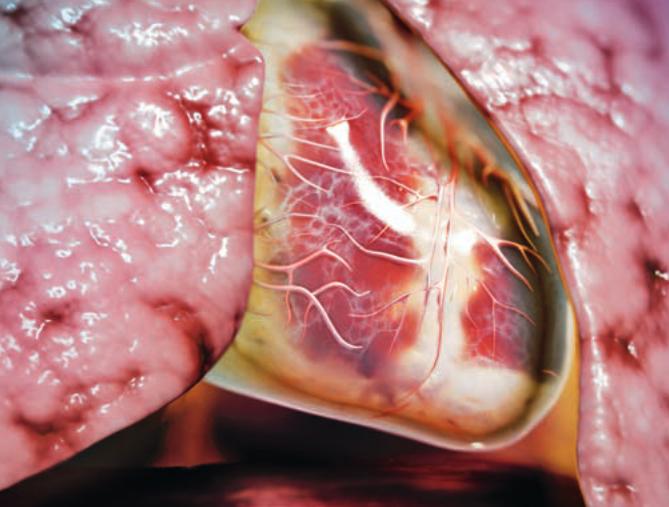Tagged: 3D animation
Periodontal Myths and Mysteries Series (IV) – The Size of the “Periodontal Wound”
Europerio 8 in London earlier this year saw the world premiere of the 3D video animation, Oral Health and General Health – The Links Between Periodontitis, Atherosclerosis and Diabetes. The movie was produced by Sunstar and Quintessence Publishing and is the fourth in a series commonly called Cell-to-Cell Communications (I had written a critical review about the first installment here; empty knowledge, Matrix-Reloaded style) and the trailer can currently be seen on the EFP website. A pumping heart gets an infarction.
Myocardial infarction. A life-threatening manifestation of a series of inflammatory changes in the walls of the coronary arteries. It is a leading cause of death in the western world. Can periodontitis or other inflammatory processes in the oral cavity contribute to the development of cardiovascular diseases and systemic conditions such as artherosclerosis or diabetes or negatively influence their course?
This is fear-mongering and, to say the least, misleading the public by completely ignoring all established risk factors for cardiovascular disease (high blood pressure, high cholesterol, smoking, unhealthy diet, obesity, lack of physical activity) and diabetes as well.
As the German version of The Links will be presented at the big national dental congress in November, authors Stadlinger, Terheyden and Jepsen have published a respective essay in Zahnärztliche Mitteilungen, the German Dental Associations’ biweekly tabloid (scroll to page 38). It is strangely called “Storyboard”; and, as before in the series, biofilm and cells become actors. Apparently, Quintessence goes Hollywood. The article (unfortunately in German) is prominently featured on its cover. A careful review reveals, unsurprisingly, a remarkable mixture of undeniable facts about the well-known pathogenesis of both artherosclerosis and its sequels and diabetes, and wild speculation regarding possible contributions of periodontal pathogens. It once more seems that “visualizing the invisible” may in fact create more confusion than understanding.
